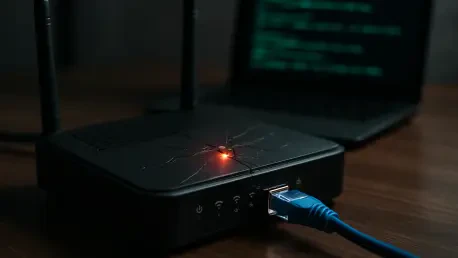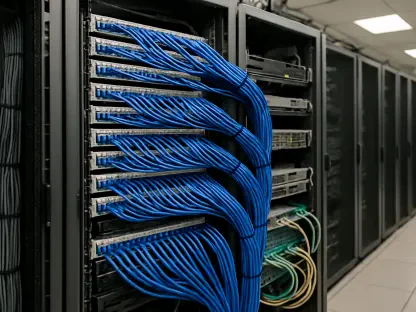As we dive into the complex world of cybersecurity, I’m thrilled to sit down with Matilda Bailey, a renowned networking specialist with a sharp focus on cutting-edge technologies in cellular, wireless, and next-gen solutions. With her extensive expertise, Matilda is the perfect guide to help us unpack the chilling details of Operation WrtHug, a sophisticated cyber espionage campaign that has compromised over 50,000 Asus routers worldwide. In this conversation, we’ll explore how these attacks unfolded, the vulnerabilities that made them possible, the strategic goals behind building a global network of infected devices, and the broader implications for users and organizations alike.
Can you start by giving us an overview of Operation WrtHug and how this massive hacking campaign targeting Asus routers came to light?
I’m glad to shed some light on this. Operation WrtHug is a cyber espionage campaign, believed to be orchestrated by a Chinese state-sponsored group, that has infected over 50,000 Asus routers globally. It was uncovered by a cybersecurity firm’s threat research team, who noticed unusual patterns in network traffic and device behavior over a span of six months. What makes this operation particularly alarming is its scale and stealth—it’s designed to create a persistent network for espionage, quietly turning everyday routers into tools for global surveillance. Compared to other threats, its focus on outdated, often unsupported devices and the sheer number of compromised systems really sets it apart.
How did the hackers pull off compromising so many routers, and what specific weaknesses did they target?
The attackers exploited known vulnerabilities in the Asus routers, particularly focusing on the AiCloud service, which lets users access local storage remotely over the internet. They targeted flaws like high-severity command injection issues, where insufficient filtering of special characters allowed malicious code to be executed. Another critical flaw was improper authentication control, essentially leaving the door wide open for unauthorized access. Many of these routers are discontinued models, so they often lack the latest security updates, making them low-hanging fruit for hackers who know exactly where to look.
For those of us who aren’t tech experts, can you explain what the AiCloud service does and why it became such a prime target in this attack?
Absolutely. AiCloud is a feature on Asus routers that allows users to access files stored on a connected drive from anywhere via the internet. Think of it as a personal cloud service tied to your home network. It’s convenient, but it also exposes the router to the web, which is a goldmine for hackers if there are security gaps. In Operation WrtHug, the attackers zeroed in on bugs within AiCloud because exploiting them gave direct access to the router’s core functions, letting them manipulate the device without the user ever noticing.
The report mentions high-severity vulnerabilities with codes like CVE-2023-41345. Can you break down what these codes mean and why they pose such a serious threat?
Sure, CVE stands for Common Vulnerabilities and Exposures—it’s a standardized way to catalog and identify specific security flaws. Each code, like CVE-2023-41345, points to a unique issue, in this case, a command injection flaw in Asus routers. These are rated as high-severity because they allow attackers to run arbitrary commands on the device, essentially taking full control. For the average user, this means a hacker could use your router to spy on your network, steal data, or even launch attacks on others, all while you’re unaware. The danger lies in how easily these flaws can be exploited if left unpatched.
Once the hackers gained access to these routers, what did they do with them, and what’s the significance of installing a shared TLS certificate with a 100-year expiration?
After compromising the routers, the hackers turned them into nodes in a global network, essentially creating a hidden infrastructure for espionage. They installed a shared, self-signed TLS certificate with a 100-year expiration starting from April 2022. This certificate acts as a marker—an indicator of compromise—but also helps them secure communications between the infected devices. It’s a way to maintain long-term control and ensure their network remains operational for decades, which is incredibly strategic and shows they’re playing the long game in terms of persistence.
How does turning thousands of routers into a global network support espionage activities?
When you have a network of over 50,000 compromised routers, you’ve essentially built a massive, hidden platform for espionage. These devices can be used to route malicious traffic, mask the origin of attacks, or collect data from the networks they’re connected to. For state-sponsored actors, this is invaluable—it lets them conduct surveillance, launch targeted attacks, or even disrupt communications in specific regions without being traced. It’s like having an army of invisible spies embedded in homes and businesses worldwide, all working together to gather intelligence or enable larger operations.
The data shows that most compromised devices are in Taiwan, with others scattered across the US, Russia, and elsewhere. Why do you think Taiwan is the primary hotspot for these attacks?
Taiwan’s high concentration of affected devices—between 30% and 50% of the total—likely points to a strategic focus by the attackers. Given the geopolitical tensions in the region, especially involving China, it’s plausible that Taiwan is a key target for intelligence gathering or establishing a foothold for future operations. Additionally, there might be a higher prevalence of the vulnerable Asus models in use there, combined with slower adoption of updates or replacements. It suggests a deliberate choice to prioritize this area for maximum impact, whether for espionage or as a testing ground for broader campaigns.
This isn’t the first time Asus routers have been hit by China-linked hackers. Can you tell us about the earlier AyySSHush network and how it relates to Operation WrtHug?
Certainly. The AyySSHush network was another China-linked operation targeting Asus routers, uncovered earlier this year. Like Operation WrtHug, it aimed to build a covert network of infected devices for espionage, exploiting similar vulnerabilities in outdated models. While there’s only a small overlap in compromised IP addresses between the two campaigns, the methods and goals are strikingly similar—both focus on persistent access and stealth. It’s possible they’re part of an evolving strategy by the same threat actor, or even coordinated efforts by related groups, though we don’t yet have concrete evidence to confirm that connection.
What can users do to protect themselves from campaigns like Operation WrtHug, especially if they own older Asus routers?
The first step is to check if your router model is among those affected—many of the compromised devices are discontinued models that no longer receive updates. If that’s the case, replacing it with a newer, supported model is the safest bet. For those who can’t replace their device immediately, ensure you’ve applied all available patches and disable features like AiCloud if you don’t need them, as they increase exposure. Regularly monitor your network for unusual activity, and consider using a firewall or other security tools to add an extra layer of defense. Staying proactive with updates and being cautious about internet-facing services is key.
Looking ahead, what is your forecast for the evolution of state-sponsored cyber campaigns like Operation WrtHug in the coming years?
I expect these campaigns to grow in both scale and sophistication. State-sponsored actors are increasingly targeting everyday devices—routers, IoT gadgets, even smart appliances—because they’re often overlooked and poorly secured, offering a perfect backdoor for espionage. We’ll likely see more focus on building resilient, decentralized networks of compromised devices to support long-term operations. At the same time, advancements in AI and automation could make these attacks harder to detect, as threat actors refine their ability to blend into normal traffic. It’s a cat-and-mouse game, and unfortunately, the stakes are only going to get higher as our reliance on connected technology deepens.









